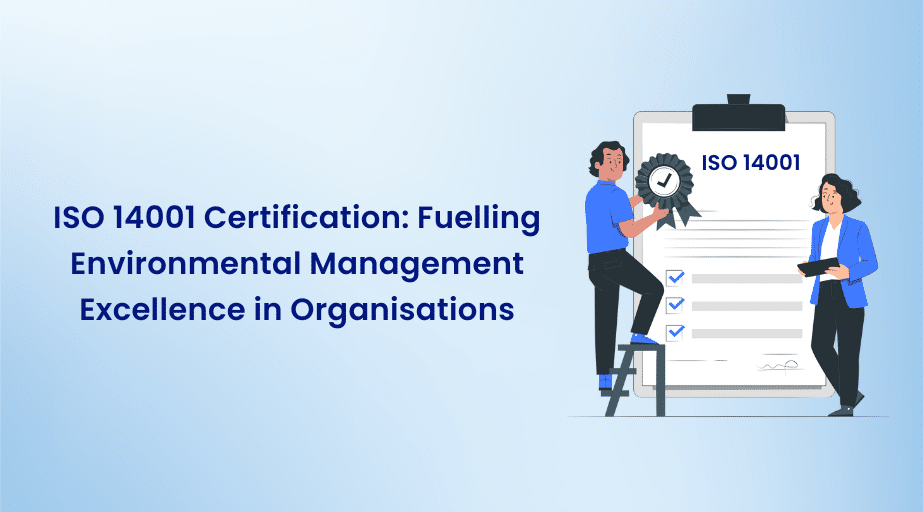In a world increasingly concerned with environmental sustainability, ISO 14001 Certification has emerged as a crucial facilitator in driving environmental management in organizations. This globally recognized certification underscores a company’s commitment to managing its environmental responsibilities effectively. An integral aspect of maintaining and improving these standards is conducting an ISO 14001 Internal Audit. This blog will explore the importance of ISO 14001 Certification and the pivotal role of internal audits in sustainable environmental management.
Understanding ISO 14001 Certification
ISO 14001 Certification, which is optional, establishes the guidelines for a competent Environmental Management System (EMS). It is applicable to any organization, regardless of its size, type, and nature, and doesn’t dictate absolute environmental performance requirements. Contrarily, it offers a blueprint that an organization can adopt to create an efficient EMS, thereby aiding in the reduction of its environmental footprint.
The Benefits of ISO 14001 Certification
ISO 14001 Certification offers a plethora of benefits to organizations. Firstly, it assists in identifying, prioritizing, and managing environmental risks as part of an overall risk management strategy, which can lead to increased operational efficiency and reduced waste.
Moreover, being ISO 14001 certified demonstrates an organization’s commitment to environmental stewardship to stakeholders, investors, and consumers. This can enhance an organization’s reputation and provide a competitive edge in the marketplace.
Furthermore, ISO 14001 Certification can ensure compliance with legal and regulatory requirements, potentially reducing the risk of penalties and litigation. Additionally, it lays out a structure for the perpetual enhancement of an organization’s environmental performance.
The Role of ISO 14001 Internal Audit
An ISO 14001 Internal Audit is a vital component of the EMS. It is a systematic, independent process to determine whether the EMS meets the ISO 14001 standard’s requirements and whether it has been effectively implemented and maintained.
The internal audit assesses the effectiveness of the EMS, identifies areas for improvement, and provides an opportunity for corrective actions. The process not only ensures compliance with the ISO 14001 standard but also helps to continuously improve environmental performance.
Preparing for ISO 14001 Certification
Achieving ISO 14001 Certification requires careful planning and preparation. An organization must establish an EMS according to the ISO 14001 standard’s requirements, which include developing an environmental policy, identifying environmental aspects and impacts, establishing objectives and targets, implementing operational controls, and conducting internal audits, among other activities.
Training is a crucial aspect of preparing for ISO 14001 Certification. There are numerous training courses available that can provide a comprehensive understanding of the ISO 14001 standard, as well as practical skills for implementing an EMS and conducting internal audits.
ISO 14001 Certification: A Vision for a Sustainable Future
As climate change and environmental challenges continue to reshape our world, it is more important than ever for businesses to adopt sustainable practices. ISO 14001 Certification signifies a bold step toward a sustainable future, where organizations play an active role in managing and mitigating environmental risks.
With ISO 14001 Certification, businesses can align their operations with global sustainability goals. The robust framework provided by the certification enables them to understand and control the environmental impact of their activities, products, and services. Moreover, an effective ISO 14001 Internal Audit ensures continuous improvements in the EMS, fostering a culture of environmental responsibility within the organization.
ISO 14001 Certification, therefore, offers organizations a path to balance economic efficiency with environmental stewardship, contributing to a more sustainable and resilient future.
Conclusion
In conclusion, ISO 14001 Certification is a strategic tool that can help organizations manage their environmental responsibilities in a systematic manner, contributing to the pillar of sustainability. An effective ISO 14001 Internal Audit is crucial to ensure the EMS’s ongoing effectiveness and compliance with the standard.
By adopting ISO 14001 Certification, organizations can not only enhance their environmental performance but also instill trust among stakeholders, comply with regulatory requirements, and improve overall operational efficiency. It’s an investment in the future, both for the organization and our planet.





